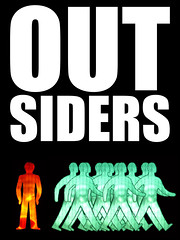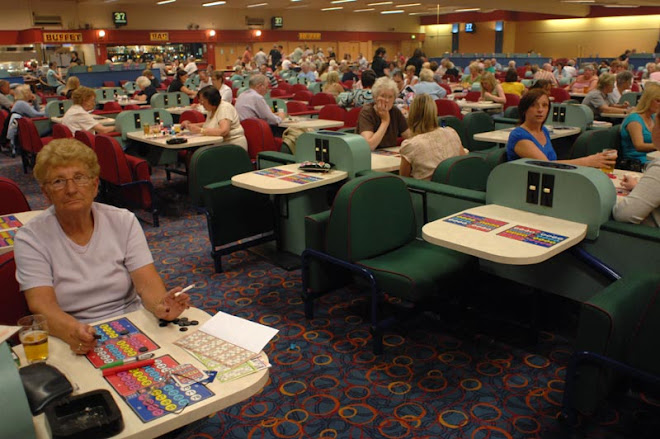[gallery]
Yes, I know it's a lot to take in. Briefly the Interactive Newsprint (IN) project is displaying its prototype designs - including some of my images – at London Design Festival (Sept 14 to 23, 2012).
The images include printed buttons which play back various pieces of audio. The paper is also connected to the internet via wi-fi. It's very exciting.
If you want to go along and see it and other amazing examples of the groundbreaking technology, it is at 4 Cromwell Place, just up from South Kensington tube station and just down from the Natural History Museum and V&A.
I wrote about IN a previous blog. And here is the website for Brompton Design District.
The London Design Festival is rather amazing and anybody interested in innovation will love it.
If you've gotten this far and are still interested, here are some words sent to my by the Brompton people about what's going on at Cromwell Place:
For London Design Festival, Fieldguide has brought together a diverse mix of designers, technologists, artists, musicians and journalists to show some of their most exciting work from the last year. These projects, prototypes and products will demonstrate how insight journalism can be used as a tool for design research, how paper can connect to the internet and how design can be used to speculate on a physical digital society.
The exhibition features new work from Brendan Dawes, author of the inspirational book “Analog in, Digital Out” which collected his thoughts on interaction design and featured amongst other things: books wrapped in brown paper, bits of code, cheese, hardware hacks, Play-Doh and stories of origami swans left on trains. For London Design Festival he’s collaborating with Bare Conductive, electrically conductive materials pioneers, to create a new version of his Happiness Machine, an Internet connected printer that prints random happy thoughts by random people from across the web.
Alongside Brendan will be #UNRAVEL, a collaboration by FOUND, best known for Cybraphon their BAFTA-winning ‘Autonomous Emotional Robot Band’ and Aidan Moffat, the Glasgow-based author and musician formerly of the seminal band Arab Strap. The interactive sound installation encourages people to unravel the truth about The Narrator’s life by playing records from his collection. Each 7” record represents a different memory, but unlike conventional vinyl recordings they sound different each time they are played. The memories embodied in the installation will distort, evolve and warp depending on external influences: the time of day, the size of #UNRAVEL’s audience, the local weather, and what people are writing about the installation on twitter from moment to moment.
The exhibition will also include work from design consultancy Uniform, design provocateur Patrick Stevenson-Keating, and design researchers Product Research Studio as well as feature work from two groundbreaking collaborative research projects funded by Nesta and the Digital Economy programme from Research Councils UK that pioneer the use of insight journalism to uncover the potential of digital R&D in the cultural sector and explore how newspapers can harness the potential of printed electronics.
The end. Well done.
Yes, I know it's a lot to take in. Briefly the Interactive Newsprint (IN) project is displaying its prototype designs - including some of my images – at London Design Festival (Sept 14 to 23, 2012).
The images include printed buttons which play back various pieces of audio. The paper is also connected to the internet via wi-fi. It's very exciting.
If you want to go along and see it and other amazing examples of the groundbreaking technology, it is at 4 Cromwell Place, just up from South Kensington tube station and just down from the Natural History Museum and V&A.
I wrote about IN a previous blog. And here is the website for Brompton Design District.
The London Design Festival is rather amazing and anybody interested in innovation will love it.
If you've gotten this far and are still interested, here are some words sent to my by the Brompton people about what's going on at Cromwell Place:
For London Design Festival, Fieldguide has brought together a diverse mix of designers, technologists, artists, musicians and journalists to show some of their most exciting work from the last year. These projects, prototypes and products will demonstrate how insight journalism can be used as a tool for design research, how paper can connect to the internet and how design can be used to speculate on a physical digital society.
The exhibition features new work from Brendan Dawes, author of the inspirational book “Analog in, Digital Out” which collected his thoughts on interaction design and featured amongst other things: books wrapped in brown paper, bits of code, cheese, hardware hacks, Play-Doh and stories of origami swans left on trains. For London Design Festival he’s collaborating with Bare Conductive, electrically conductive materials pioneers, to create a new version of his Happiness Machine, an Internet connected printer that prints random happy thoughts by random people from across the web.
Alongside Brendan will be #UNRAVEL, a collaboration by FOUND, best known for Cybraphon their BAFTA-winning ‘Autonomous Emotional Robot Band’ and Aidan Moffat, the Glasgow-based author and musician formerly of the seminal band Arab Strap. The interactive sound installation encourages people to unravel the truth about The Narrator’s life by playing records from his collection. Each 7” record represents a different memory, but unlike conventional vinyl recordings they sound different each time they are played. The memories embodied in the installation will distort, evolve and warp depending on external influences: the time of day, the size of #UNRAVEL’s audience, the local weather, and what people are writing about the installation on twitter from moment to moment.
The exhibition will also include work from design consultancy Uniform, design provocateur Patrick Stevenson-Keating, and design researchers Product Research Studio as well as feature work from two groundbreaking collaborative research projects funded by Nesta and the Digital Economy programme from Research Councils UK that pioneer the use of insight journalism to uncover the potential of digital R&D in the cultural sector and explore how newspapers can harness the potential of printed electronics.
The end. Well done.





